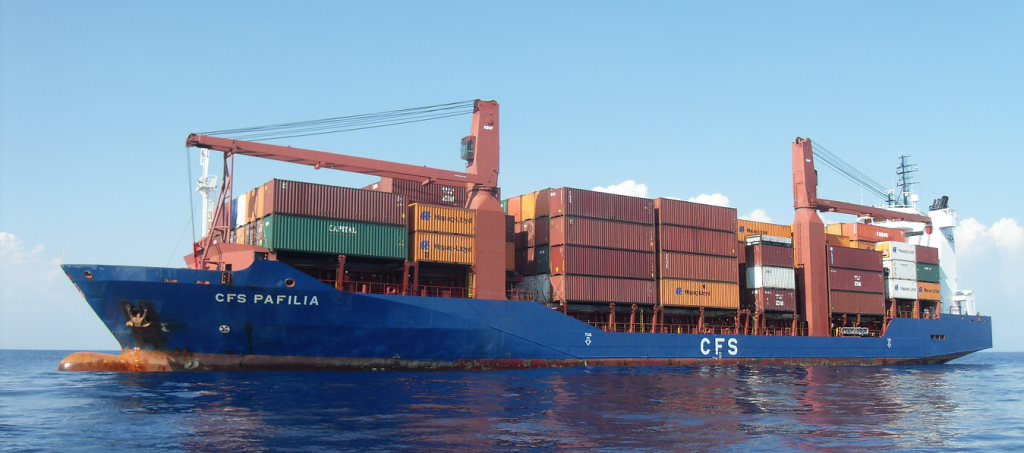The future size of feeder vessels will determine how much the legacy locks at the Panama Canal will be utilized by ocean carriers, compared to the new section for big ships.
The expanded section of the Panama Canal that opened for business in late June was built at a tremendous cost to support the trend towards use of cost-efficient mega-vessels.
Future demand for the 100-year-old original locks will depend on how carriers establish new neo-Panamax trade routes and redeploy vessels that have been displaced on trans-oceanic trunk lines into regional services, a top official for the Panama Canal Authority (ACP) said last month.
“We got to get to the right size of the feeder vessels, but we don’t know yet what they will be,” Oscar Bazan, vice president for planning and business development at ACP, said last month at the South Carolina International Trade Conference near Charleston, S.C. “Once the industry has defined what is a feeder and what is a neo-Panamax, then we’ll see how the network is going to work.”
Container vessels with about 5,000 TEUs of capacity can fit through the legacy Panama Canal locks. An increasing number of vessels in the 8,000-to-9,000 TEU range, termed “post-Panamax,” are now calling at U.S. East Coast ports by transiting the wider section of the Panama Canal or the Suez Canal. Neo-Panamax vessels are defined as ones in the 10,000-14,000-TEU range and could begin transiting the Panama Canal later this year, according to industry officials.
If feeder vessels that shuttle freight from load centers to destination ports are bigger than 5,000 TEUs, it will prevent them from using the older locks.
The neo-Panamax vessels are expected to shuttle between Asia and the U.S. East Coast, but the Panama Canal expansion opens up all possibilities for shifting trade patterns between Pacific and Atlantic coasts in North and South America as well.
Bazan said ACP is also conducting a 40-year demand forecast, which is difficult to do because of changing macro-economic conditions such as the global economy, population and consumption growth, and the slowdown of exports from China as that country focuses on domestic manufacturing and the service economy.
Panama has room for a fourth set of locks if long-term demand dictates a need, he added.
More than 200 vessels, including container ships, liquefied petroleum gas (LPG) carriers, vehicle carriers, oil tankers, dry bulkers and liquefied natural gas (LNG) carriers, have transited the Panama Canal since the new lane opened last summer, according to ACP figures. About 70 percent of the transits are by container vessels.
Initial projections were that one to two vessels per day would utilize the expanded locks, which are 70 feet wider and 18 feet deeper than those in the original Canal, but Bazan said about 2.5 vessels per day are making the transit.
He noted that major liner carriers have rerouted service to the Panama Canal to take advantage of the time savings the waterway provides. The 2M Alliance of Maersk and Mediterranean Shipping, for example, announced in July that it is switching a couple of services from the Suez Canal to the Panama Canal.
The boom in U.S. oil and gas production due to fracking technology is also expected to increase demand for exporting energy products from Gulf Coast ports to Asia, Bazan said.
In recent weeks, the Panama Canal has handled the largest car carrier ever built, the first Suez Max tanker and the first Cape-size bulk vessel. Oil tankers are not likely to use the Panama Canal to make deliveries, but could use it in ballast position to complete around-the-world rotations to pick up their next load from the Middle East, Bazan said.
Using the Canal instead of rounding Cape Horn saves tankers 5,600 miles and more than 15 days of sailing time.
In April, ACP implemented temporary draft limits for large vessels because of water shortages that prevented enough water to be used in lock chambers to float vessels through. The restrictions required vessels to lighten loads at ports of origin so they ride higher and require less water to raise them through the locks.
El Niño, a climate phenomenon resulting in periodic warming of the tropical Pacific Ocean, changed the rainfall pattern in Panama, triggering a drought in the canal watershed and causing water levels in Gatun and Alhajuela lakes to fall substantially below their average.
ACP initially sets the maximum draft at 39 feet in fresh water. The draft is the distance between the waterline and the bottom of the keel.
The draft restrictions have gradually been increased to 44 feet and will soon be increased to 46 feet, Bazan said. The water reservoirs are being refiled during the rainy season and officials do not expect any long-term problems handling the largest vessels in the future, he added.
Source: American Shipper By Eric Kulisch
